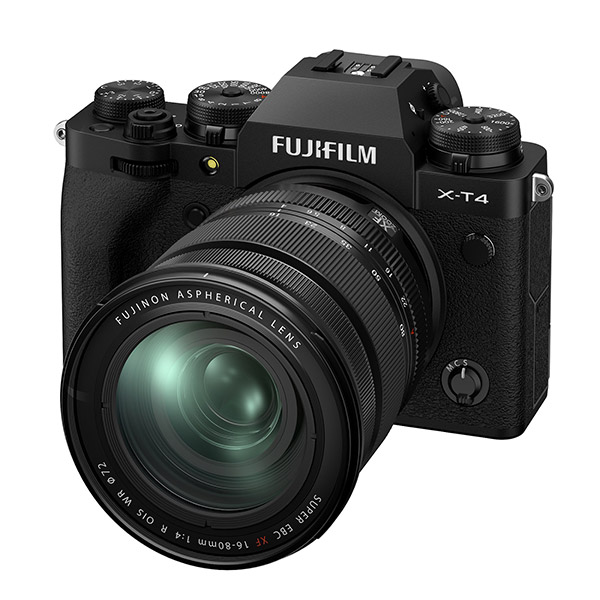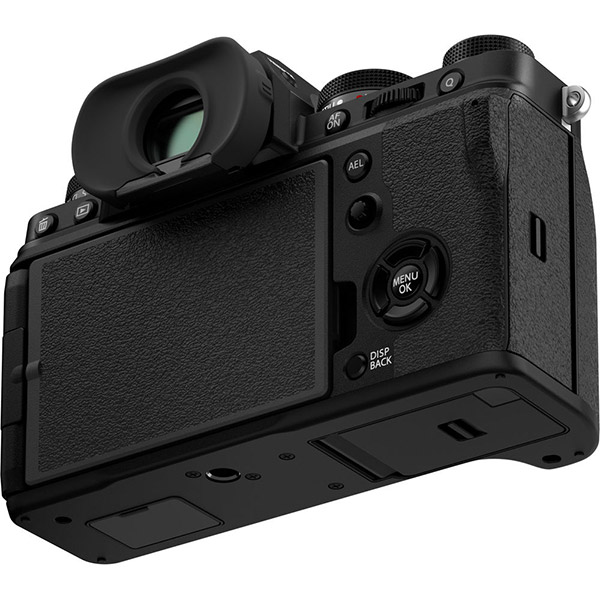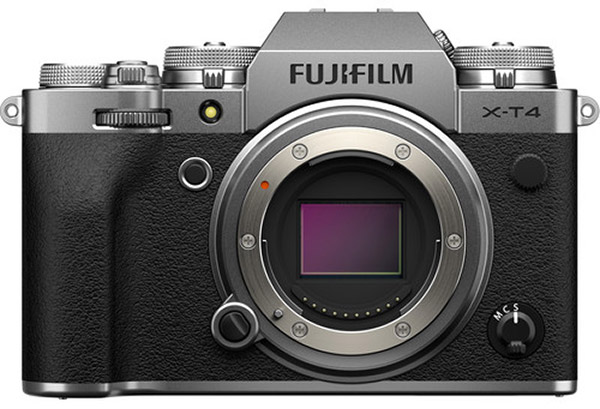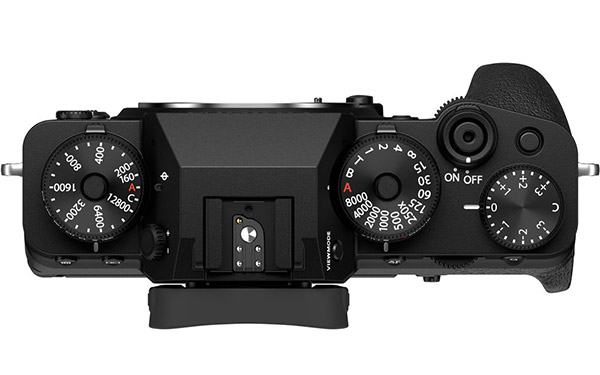The Fujifilm X-T4 is official. If you are fine with APS-C, this is the the most advanced and fully featured camera there is by a good margin. It’s an absolute power house and really versatile.

Here is my assembled hybrid Fujifilm kit with the X-T4 as the keystone. Or you can check out the camera itself on B&H.
Based on the specifications, I see it as the near perfect hybrid for a combination of photo and video work. They enhanced many aspects of the camera compared to the X-T3.
I don’t have access to the camera, but I’d like to go over various aspects of it here. Just keep that in mind that I’ve not had any hands-on time with it.
Important changes…
- Sensor based stabilization up to 6.5 stops with most of their lenses. This was apparently totally revamped technology compared to the X-H1 (mechanical springs vs. magnetic).
- Fully articulating side hinge screen meaning it can face toward the lens. This is one feature I needed to consider the camera.
- A new larger battery. The NP-W235. With all of the power hungry features enabled in the camera you should expect at least 450 photos per charge, but more likely over 600.
- The USB port can act as a headphone jack with a dongle. In addition, you can get a dedicated jack on the battery grip.
- 300,000 shutter actuation rating. This is in professional camera territory. Usually lower and mid-range models are half that or less.
- Dual UHS-II SD card slots. They positioned them vertically for less accidental removals of the one card or the other. The memory card door can be easily removed for use with a cage or other situations it can get in the way (you can get replacements covers as a pack called the CVR-XT4 Cover Kit.
- They added 1080p at 240 fps video recording.
- The camera now has a photo video toggle switch. That allows you to stay in a given mode and save settings separately between them. It also means the menus are not as cluttered for each mode.
- The microphone can now handle “line level” inputs in addition to usual microphone sources. That basically means hotter more powerful sources of audio. Think of your computer’s differences between your line input and mic inputs.
- The eye-cup apparently has a locking mechanism compared to the X-T3. They also rearranged some of the back buttons.
- Various firmware and algorithm based improvements in systems such as autofocus. This isn’t something I can comment on without having personal experience.

General properties of the camera…
- 26 megapixel APS-C 1.5x sensor in the X-Trans color filter array layout. This layout is unique to Fujifilm.
- Physical dials for shutter speed, ISO, and exposure compensation. You get the two generic adjustment dials as well that works as buttons. There is a AF selection joystick nub.
- 1/8000th of a second maximum mechanical shutter. For the electronic shutter you can get 1/32000th of a second.
- 1/250th of a second flash sync speed.
- 80 to 51200 ISO in extended mode.
- 425 phase detect autofocus points on the sensor.
- Between 30 and 8 fps modes for continuous still photo taking. The mechanical shutter can go up to 15 fps. The electronic mode does 30 fps at 20mp and 20 fps at 26 mp. These numbers are hard to follow so verify that for yourself. Some other settings can potentially affect the speed.
- A physical remote port and a threaded shutter button.
- Video recording up to 4k at 60 fps (1.18 crop) or full sensor at 4k 30 fps from 100 to 400 Mbps up to 4:2:
- A 3.5mm microphone port.
- You can record video to both SD cards at the same time. That’s a somewhat rare feature. Great for backup of video. Of course, you can do the same in photo modes as well.
- It has the standard flash PC sync port. Good for studio lighting systems.
- Uncompressed RAW, compressed lossless RAW, compressed lossy RAW, and TIFF output besides JPEGs.
- Weather resistance and rated for 14 to 104°F / -10 to 40°C operation.
- 3.69 million dot electronic viewfinder with 100% coverage at 0.75x magnification. The back 3″ screen has 1.6 million dots.

Potential drawbacks I’ve noticed so far…
- The camera doesn’t come with an external charger. I guess this is the way of things now that some cameras support USB based charging. The external dual charger is the Fujifilm BC-W235.
- The HDMI port is the smallest “micro” size. I’d have hoped they could have fit a “mini” jack in, but they didn’t.
- Some people might prefer the old screen hinge design.
- Loss of the dedicated headphone port. Though keep in mind you can use the included dongle that attaches to the USB port or use the dedicated jack on the battery grip.
- Apparently the camera will be manufactured in Japan and China. While they say the standards will be the same, we will see how it is in practice a few months after release.
- The metering dial was replaced by the photo/video switch.
- With the new battery you lose the ease of interchangeability with older Fujifilm cameras. I do see it as necessary. This camera is positioned at a level where the smaller battery wasn’t quite sufficient for some uses cases.
- No lock on the exposure compensation dial.
- The tripod socket appears to be placed a bit back so there would be less of the camera pressing against the tripod connection or a quick release plate.
Great, so what’s my opinion? Would I buy it?
Sad to say I’m not currently in a financial position to get into the Fujifilm’s system. Though now that this camera exists, I see it as as a very appealing option for anyone not too interested in fullframe. It checks all of the boxes I have with my mixture of photo and video work.
It’s too bad that Canon isn’t apparently willing to take EF-M to this level of technology and versatility, though the Canon EOS M5 got partly there a few years ago but I see that camera is much more focused on straight photography. The M6 mark II being kinda sorta similar, but still lacking such as no dual card slots, no built-in EVF, and no in-camera stabilization.
Add the X-A7 and X-T200 as potential small backup or b-roll cameras (a drawback now being different batteries…) and you have have a very versatile kit. I detail a kit I’d be interested here where I go over some lenses that look interesting and I’d consider.
The lens situation isn’t amazing. I see around 40 autofocus options, most of which are first-party. You are going to be spending some significant cash to get a solid range. Though they did recently release the XC 35mm f/2 so maybe they will start to offer cheaper options. I haven’t added up the price of the kit I put together, but I know it would be expensive. The type of expensive where you’d want to have photographer/accident insurance for a few years just in case.
I think Fujifilm should open up the mount for 3rd party companies like Sigma with their DC DN primes and also Tamron or maybe Tokina. I did see a few Zeiss options and one Viltrox. Anyways, you should most likely be at to get what you want, but it’s going to cost what Fujifilm decides without much competition in the mount. EF-M is a barren wasteland of native lens support, but at least Sigma recently was able to get the DC DN primes on there.
Here is my assembled hybrid Fujifilm kit with the X-T4 as the keystone. Or you can check out the camera itself on B&H.

